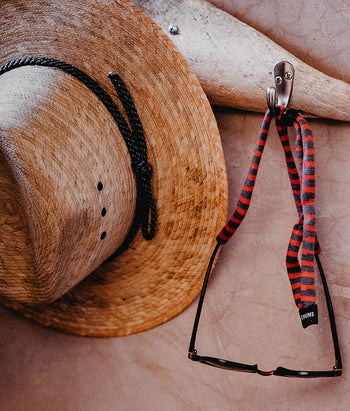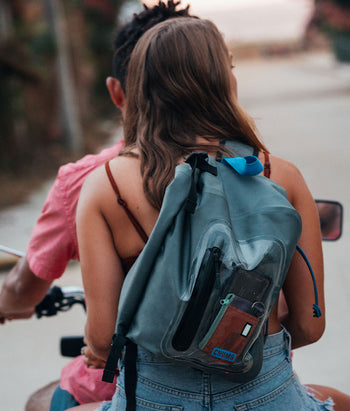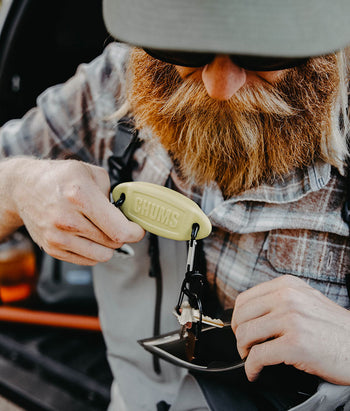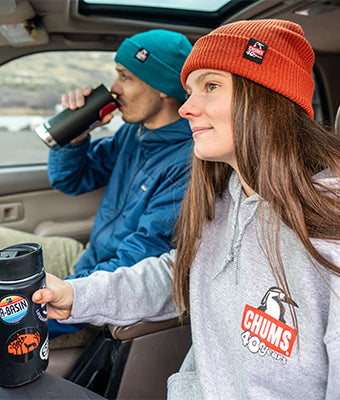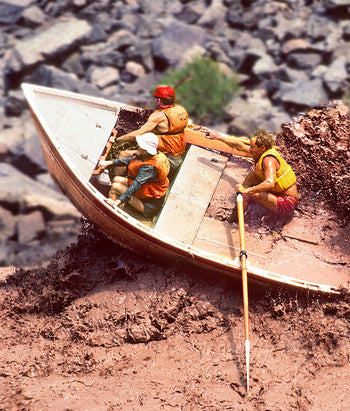Stomping Grounds: Joseph Evans
PICABO, IDAHO
WELCOME TO STOMPING GROUNDS, A BLOG SERIES WHERE WE FOLLOW OUR AMBASSADORS BACK TO THEIR HOME TURF TO FIND OUT WHAT MAKES IT UNIQUE, AND HOW IT INFLUENCES THE WAY THEY PLAY IN THE OUTDOORS.
In this episode we sit down with our youngest ambassador, Joseph Evans, to explore how his career as a summer fly fishing guide led him to lean into learning photography and videography in the off-season, and how building a following on social media continues to connect him to the global fly fishing community.
What are your first memories of Picabo?
When I first moved to Picabo, my first memories were honestly just running around the Big Wood, Lost River and Silver Creek solo, fishing as much as I could before and after my fly shop shifts trying to learn every access, and every fish’s favorite hole throughout the entire area. Now as a full time seasonal guide, that early exploration is something I tap into every day.
You grew up in Florida and have travelled around the world fishing so how does Silver Creek compare to some of the other places you’ve fished around the country?
Don’t get me wrong—saltwater fishing is thrilling, and I loved my time guiding in Florida and Puerto Rico. But salt can feel very high-stakes, very serious. There’s often pressure in that game. On Silver Creek, or on any western trout water, the stress falls away. It’s just you, the sound of a flowing stream, the open sky, and the chance at a beautiful, wild trout. At the end of the day, I’m more of a “Coors Banquet around the fire” kind of guy than a “Florida dive bar and tequila shots” kind of guy. And Silver Creek—challenging, humbling, rewarding as it is—fits me perfectly.

How would you describe Silver Creek to someone who’s never been there?
I don’t think there’s another spring creek in the West that compares to Silver Creek. The size class of the fish, the diversity of the habitat, and the richness of the hatches make it completely unique. To me, it’s both a trout angler’s paradise and their greatest adversary. What I mean by that is, no matter if you leave the creek skunked or after an unforgettable day, there’s always something that draws you back. It keeps you humble, it keeps you curious, and it keeps you coming back to try again.
The challenges are endless—and that’s exactly why it’s so special. From its cold, gin-clear water to its weedy channels, grassy undercut banks, gravel bottom, and mix of slow and fast currents, Silver Creek has every element that tests an angler. The techniques I experiment with there often translate to success in other fisheries, but nowhere pushes me to evolve more as a fly fisherman anywhere I’ve traveled to in the WORLD, other than Silver Creek.
You studied journalism in college - how does that factor into your daily life now?
One of the things I prioritize most in my work today is storytelling. For my business, Travel Fish Film, I manage social media for outdoor brands and fly-fishing lodges, which means I’m constantly blending traditional journalism and photojournalism. The skills I built in college—clear writing, documenting details, and sharing stories with impact—are now at the core of how I create and connect with people every day.

You are Chums’ youngest ambassador — when did you know that you could make guiding a career? How did you go about building your career as an angler? What hurdles did you overcome?
I realized guiding could become a real career when all the hard work I put in as a fly shop employee from age 17 to 20 started paying off. By the time I was 21, the shop and my peers were keeping me busy with enough trips to guide full-time through the summer. Over the years since, I’ve been fortunate to build relationships with clients who come back season after season, and that loyalty has helped me create a steady foundation as a guide.
That said, guiding is very seasonal. Summer provides a solid stretch of consistent work, but once it ends, I’m left with eight quiet months and very little guiding. That was one of the biggest hurdles for me early on—figuring out how to balance my passion for guiding with the reality of seasonal gaps. I overcame that by leaning into photography, videography, and storytelling in the fly-fishing space, which not only fills those months but also adds another layer to what I can offer as a professional angler.
One of the things I love most now is inspiring other young guides. With hard work, the right mindset, and a phenomenal team around you, it really is possible to be full-time in this career even at a young age. If my story can show that, then I feel like I’m giving back to the community that helped me get here.
What do you like about content creation and how do you feel that helps angling as a sport overall?
As a content creator, what I love most is that I’m really just documenting my life. These are the adventures I’m living right now, and one day when I’m not creating as much, I’ll have this archive to look back on—wild fishing trips, camping, or just living life with my best friends.
I’m not sure content creation has “helped” angling as a sport entirely, but I do think it’s become an important part of its growth. Social media keeps blowing up in our current generation, and with that comes an opportunity: younger folks have easy access to learning about fish care, conservation, and what it looks like to be a good steward of the outdoors. If my social media content helps even a few people fall in love with fly fishing, or teaches them how to protect it for future generations, then I think it’s doing its job well. There are times it is NOT doing it’s job well, but hopefully I can help others understand the do's and don'ts.

Would you describe yourself as an atypical influencer?
I guess I’d call myself an atypical influencer because I don’t really think of myself as one in the first place. For me, it’s never been about staged photos or trying to look perfect — it’s always been about keeping things real. I like sharing the ups and downs, the fish missed just as much as the fish landed, and the people and places that make this lifestyle so special.
And just to be clear, I don’t think most influencers are “fake” or anything like that — everyone has their own way of telling stories. But as an atypical one, I do my best to stand out by keeping things unique and unfiltered, posting the raw, honest stuff that doesn’t always make the highlight reel. Honestly, I get fired up by all the folks who support and connect with that realness, because without the incredible engagement my page receives, I probably wouldn’t have the guts to share the vulnerable, messy, “real shit” that actually happens out there.
My community on social media shows up for all of it — the good, the bad, and the ugly. I’ve worked hard to make my online presence a safe place to share those sides, to be open and honest, and to create something relatable. The engagement I see on Instagram and YouTube blows me away, not because of the numbers, but because it proves people care about authentic stories.
At the end of the day, I just want to inspire people to get outside, chase adventures, and have fun with it without worrying what ANYONE thinks — the same way I do.


